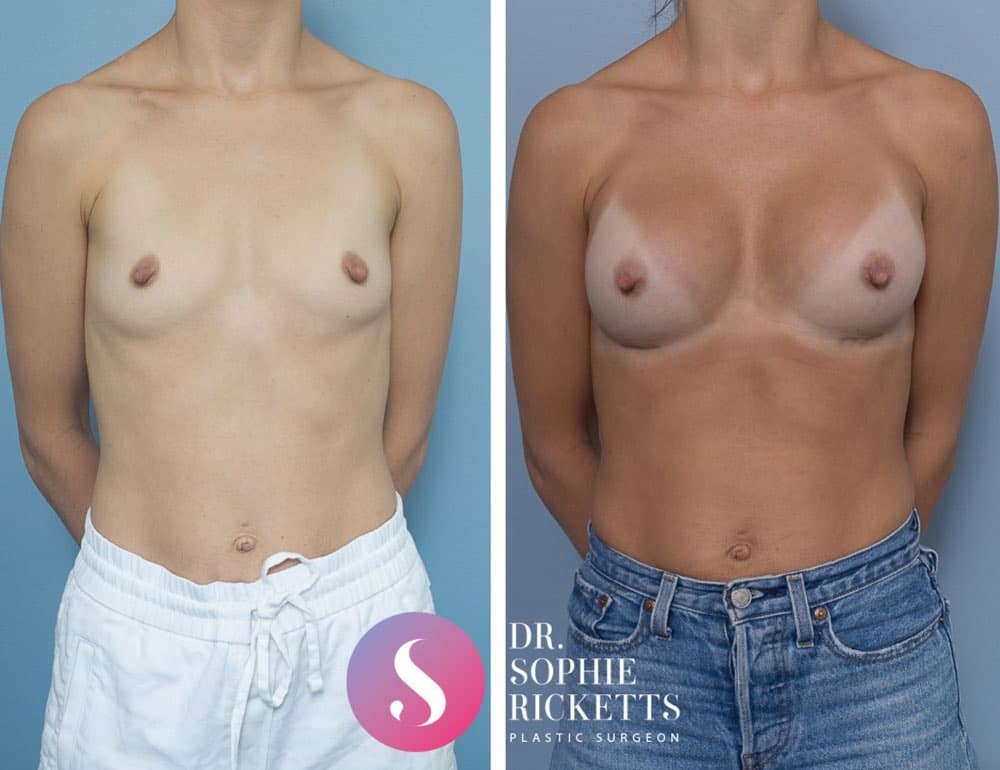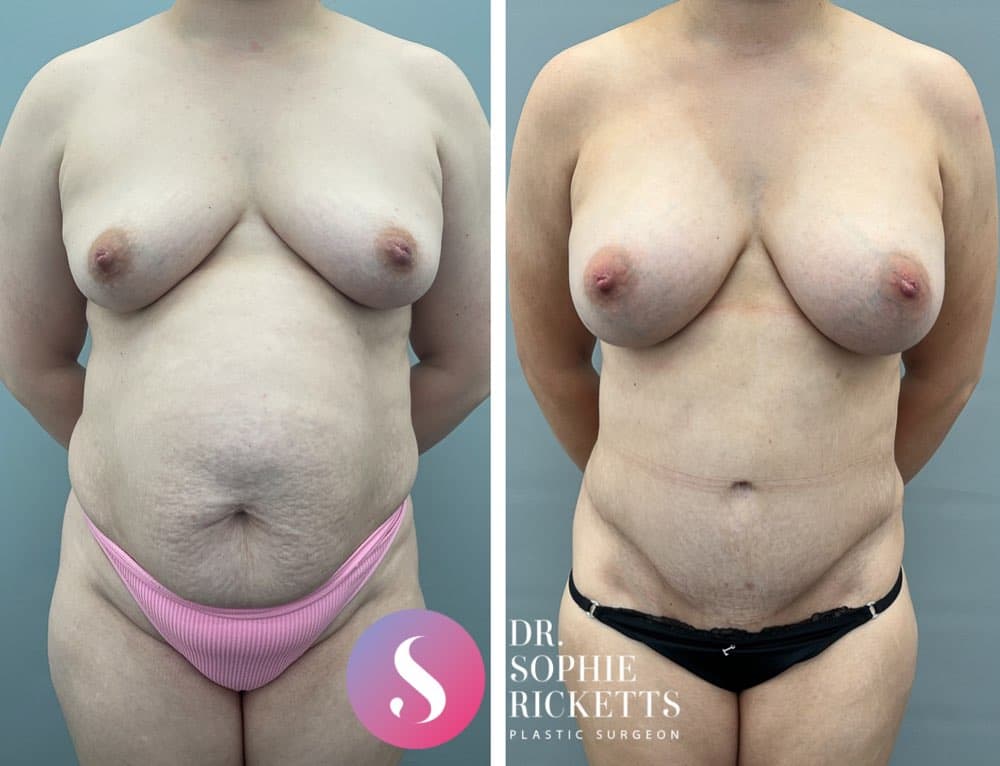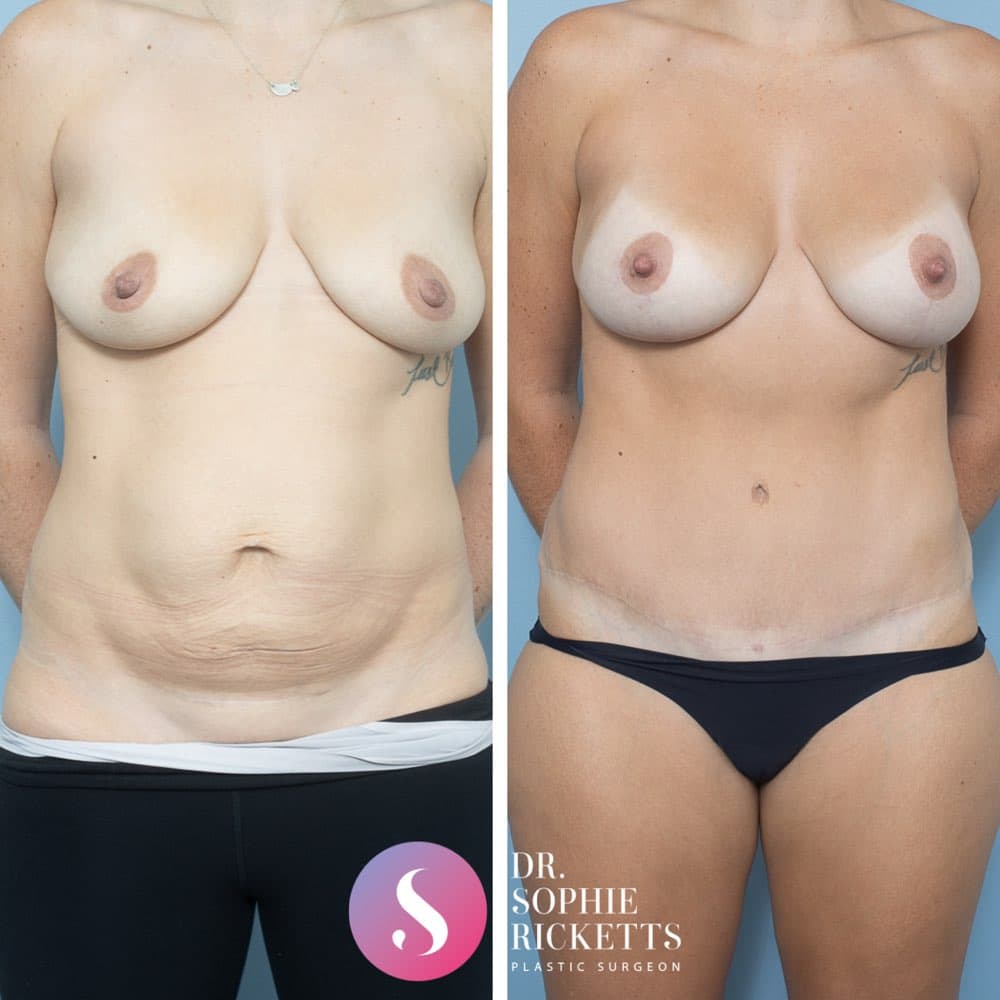Women have a breast enlargement for three main reasons: a lifestyle choice, to replace the volume lost after pregnancy and breast feeding or to replace volume after significant weight loss. Additionally, sometimes one or both breasts don’t grow like they should and an implant can be used to help correct this.
What implant, silicone or saline?
There are two main implant contents; silicone or saline. For a while, in the 90s and early 2000s, silicone implants were not used in the USA until studies were done to determine that they were safe. Research found that they were safe, and in 2006 the moratorium was lifted and they were broadly available for use once again. Most implants used today are silicone as they feel more natural and are less prone to ‘rippling’.
What size implant?
The overall dimensions of your implant; how wide and tall it is will be determined by your chest measurements. What volume or the size in cubic centimeters (cc) it is depends on personal choice. There are a number of aids to helping you in this decision, one of which is 3D digital imaging with the Vectra 3D imaging system which allows me to simulate 3D pictures of your breasts with different sized implant.
Under or over the muscle?
There are 2 main spaces that the implant can sit in. Over the pectoralis muscle or partly under the cover of it. Sometimes having the additional muscle layer over the implant is helpful if you do not have enough breast tissue to adequately camouflage the implant under the skin. In this instance, the muscle gives a more natural look. If there is sufficient breast thickness to start with then natural results are achieved with the implant over the muscle. If you are after a ‘fake look’ then going over the muscle is usually your best option.
There are pros and cons with both under and over and these will be discussed in detail with you based on your current breast shape/size and desired look.
What shape implant; round or tear drop?
This depends on how much breast thickness you start with, as well as your desired ‘look’. Most implants I use are round, provided you have reasonable breast thickness to camouflage the implant. Once again, we will discuss the choice of implant in detail at your consultation specific to your breasts.
What is Breast Implant associated ALCL?
Implant associated ALCL (Anaplastic Large Cell Lymphoma) is a rare form of cancer that develops because of breast implants in the scar capsule around the implant. It is thought to be associated with a very low grade, undetectable infection in this scar tissue. I stick to the 14-point plan to minimise the risk of infection around the implant which includes the used of the Keller Funnel™ allowing a no-touch technique of the implant, antibiotics and nipple shields, to mention a few.
“Read my answers on Realself”
Melbourne Breast Augmentation Surgeon
Gallery
Frequently Asked Questions about Breast Augmentation
What is breast augmentation surgery?
Breast augmentation surgery is a procedure to enhance breast size and shape. It involves placing implants or transferring fat to achieve the desired results. Reasons for undergoing the surgery include increasing breast size, improving shape, or restoring volume lost due to factors like pregnancy or weight loss. The procedure typically involves anaesthesia, incisions, implant placement, and closure. It’s important to consult with a plastic surgeon to discuss goals, options, risks, recovery, and expected outcomes.
Who is a candidate for breast augmentation?
Ideal candidates for breast augmentation are individuals who:
1. Desire a change in breast size: Candidates should have a clear and realistic expectation of the desired increase in breast size.
2. Have fully developed breasts: Breast augmentation is typically recommended for individuals whose breasts have fully developed, which usually occurs in the late teens or early twenties.
3. Have good overall health: Candidates should be in good physical health and free from any underlying medical conditions that could pose risks during surgery or impede the healing process.
4. Have realistic expectations: It’s important to have realistic expectations about the outcomes of breast augmentation and understand the limitations and potential risks involved.
5. Are emotionally prepared: Breast augmentation is a significant decision, so candidates should be emotionally prepared for the procedure, including understanding the potential impact on body image and self-esteem.
During a consultation with a plastic surgeon, they will evaluate a candidate’s physical health, examine the breast anatomy, discuss desired outcomes, and address any concerns. They will also consider factors such as the individual’s breast size, shape, and skin quality to determine the most appropriate surgical approach and implant options.
It’s crucial to have a thorough discussion with a qualified plastic surgeon to assess candidacy, understand the procedure, discuss potential risks, and ensure that breast augmentation is the right choice for the individual’s goals and expectations.
Can I breastfeed with breast implants?
Breastfeeding after breast augmentation is generally possible, but it can depend on factors such as implant placement and incision location. While many women with implants can breastfeed successfully, it’s important to discuss your desire to breastfeed with your plastic surgeon and consider individual factors that may affect breastfeeding.




